Two Thimothées. Films reviewed: Dune, The French Dispatch
Hi, this is Daniel Garber at the Movies for culturalmining.com and CIUT 89.5 FM.
Nostalgia is an interesting phenomenon that changes with the times, where past events are coloured by present-day attitudes. This week, I’m looking at two new movies: one set in the future but based on a novel from the 1960s; and the other set in the past but based on American perceptions of a Europe that never was.
Dir: Denis Villeneuve (Based on the book by Frank Herbert)
It’s the future. The universe is divided up by ruthless feudal planets looking to increase their wealth and power through extraction of precious minerals. One prize planet is Arrakis, seemingly inhospitable and covered in sand dunes, with gigantic killer worms living just beneath the surface. However the sand yields “spice” a highly coveted group of elements that make intergalactic travel possible. But the planet is populated by the fiercely independent Fremen. Paul (Thimothée Chalamet) the son of a Duke, is sent there after a cruel leader is forced to leave. Paul’s dad is a decorated military hero (Oscar Isaac) and his mom is a sorceress (Rebecca Ferguson). So the multilingual young man has been trained from an early age both in martial arts and complex mental powers. He can predict the future through his dreams. He hopes to secure the planet while leaving the Fremen unharmed. But various international  forces are working against him and his family— was he sent to the planet merely to be eliminated?
forces are working against him and his family— was he sent to the planet merely to be eliminated?
Dune is a science fiction, space movie with a complex novelistic plot and many characters. It’s breathtakingly beautiful, done in the style of the cover art of 1970s paperbacks. I’m talking gorgeous costumes with the Fremen dressed like multi-ethnic saharan Tuareg, and concrete beige spaceships rendered in a brutalist style. And it’s shot in IMAX, meaning it’s  a tall movie not a wide movie. I saw it at TIFF at the Cinesphere, where 50-foot sandworms lunge at you from the screen, like they’re about to swallow you up. That said, while I loved the movie aesthetically, it didn’t move me emotionally at all. Maybe because I read the book in junior high so I knew what was going to happen, or maybe because it’s the first of a three part series and doesn’t really end, or maybe because science fiction isn’t supposed to make you cry. Whatever the reason, I think Dune is a fantastic, though unfulfilling, movie to see.
a tall movie not a wide movie. I saw it at TIFF at the Cinesphere, where 50-foot sandworms lunge at you from the screen, like they’re about to swallow you up. That said, while I loved the movie aesthetically, it didn’t move me emotionally at all. Maybe because I read the book in junior high so I knew what was going to happen, or maybe because it’s the first of a three part series and doesn’t really end, or maybe because science fiction isn’t supposed to make you cry. Whatever the reason, I think Dune is a fantastic, though unfulfilling, movie to see.
Dir: Wes Anderson
It’s the Twentieth Century, Newspapers are revered, and even smaller cities have foreign correspondents. One such paper, based in Liberty Kansas, opens a bureau in France, known as the French Dispatch, to replace their usual colour Sunday supplement. They spare no expense, hiring the finest writers to ruminate on topics of their choice, including Berensen (Tilda Swinton) on art, Krementz (Frances McDormand) on politics, and Wright (Jeffrey Wright) on food. At its peak it has more than half a million subscribers, but when the editor (Bill Murray) dies, it publishes its final issue. This film dramatizes three of its best stories. In the first chapter, Berensen looks at Moses Rosenthaler (Benicio Del Toro) a killer locked away fin a prison for the criminally insane. He paints abstract canvases of his prison guard Simone (Lea Seydoux) who poses nude for him. But can a shady art dealer (Adrian Brody) save him from obscurity? In the second story, seasoned journalist Krementz covers the student uprisings of the 1960s, where she befriends young Zefirelli  (Timothée Chalamet) who calls for revolution. But will her carnal attraction to the much younger student compromise her neutrality as a journalist? In the third story, ostensibly a look at a chef who works at the police station, turns into an action thriller, as a detective’s young son is kidnapped by a hardened criminal. Can a food critic write a credible eye-witness report on organized crime?
(Timothée Chalamet) who calls for revolution. But will her carnal attraction to the much younger student compromise her neutrality as a journalist? In the third story, ostensibly a look at a chef who works at the police station, turns into an action thriller, as a detective’s young son is kidnapped by a hardened criminal. Can a food critic write a credible eye-witness report on organized crime?
The French Dispatch is, of course, total fiction. These exciting stories are set not in Paris, but in a tiny town called Ennui-sur-Blasé. And the magazine is not the New Yorker — its from Liberty, Kansas, pop: 123.  What it is is a highly-stylized, funny and quirky look at old school journalists and the stories they told. It’s loaded with in-jokes and thousands of obscure cultural references. Camera work is as precise as a graphic novel moving from panel to panel. Scenes vary between sharp black and white, faded colour or the garish tones of the 70s. Styles cover everything from animated comics, to stage plays, to old tabloid flash-photos. It’s almost overwhelming in its visual impact. French Dispatch is a brilliant illustration of mid-century, middle-class culture… and wonderful to watch.
What it is is a highly-stylized, funny and quirky look at old school journalists and the stories they told. It’s loaded with in-jokes and thousands of obscure cultural references. Camera work is as precise as a graphic novel moving from panel to panel. Scenes vary between sharp black and white, faded colour or the garish tones of the 70s. Styles cover everything from animated comics, to stage plays, to old tabloid flash-photos. It’s almost overwhelming in its visual impact. French Dispatch is a brilliant illustration of mid-century, middle-class culture… and wonderful to watch.
Dune and The French Dispatch both open this weekend; check your local listings.
This is Daniel Garber at the Movies, each Saturday morning, on CIUT 89.5 FM and on my website, culturalmining.com
Daniel Garber talks with documentary filmmaker Joanne Belluco about Stuck, premiering at Cinefranco
 Hi, this is Daniel Garber at the Movies for culturalmining.com and CIUT 89.5 FM.
Hi, this is Daniel Garber at the Movies for culturalmining.com and CIUT 89.5 FM.
What do these people have in common?
A writer and storyteller in Toronto; a dancer in France; a stand-up comic in New Brunswick; a theatre director in Sudbury; a cinematographer in Winnipeg; an electronic musician in Northern Ontario; and a brother/sister musical duo in Montreal?
They’re all francophone Canadians who work in the performing arts. And during the pandemic they all find themselves stuck! Stuck à la maison, stuck at home.
Stuck is also the name of a new documentary feature that looks at the effect of the coronavirus — and the restrictions it brought — on these people’s lives and careers.
Stuck was directed by Joanne Belluco, a French-born, Toronto-based documentary filmmaker, producer, writer and journalist.
I spoke with Joanne in Toronto via ZOOM.
Stuck is having its world premiere at Toronto’s Hot Docs Cinema on November 1, at 7:30 pm at Toronto’s CineFranco film festival.
Disturbed or unusual boys and men. Films reviewed: Halloween Kills, Mass, I’m Your Man
Hi, this is Daniel Garber at the Movies for culturalmining.com and CIUT 89.5 FM.
Spring Film Festival season continues in October, with ImagineNATIVE showing wonderful indigenous films and art from here and around the world beginning next week; and Toronto After Dark, bringing us the best new horror, sci-fi and action movies, now through Sunday.
This week I’m looking at three new movies — a slasher horror, a serious drama, and a romantic comedy — about disturbed or unusual boys and men.
There’s a dangerous man with a knife and a mask; two sets of parents mourning the death of their boys; and a woman whose perfect date isn’t exactly human.
Dir: David Gordon Green
It’s 2018 in Haddonfield, Illinois. This town is notorious for a series of murders beginning in the late 1970s, by Michael Myers, a mysterious man in a white mask. Michael has brutally killed countless people using a sharp knife on Halloween. Laurie Strode (Jamie Lee Curtis) was a babysitter who survived this attack and the many others that followed. When he reappeared at this year’s Halloween, 40 years later, Laurie was not that surprised. Together with her daughter Karen (Judy Greer) and grand-daughter Allyson (Andi Matichek) they managed to finally defeated this monster by leaving him trapped in a burning house. Or have they? You see, Michael is virtually indestructible, with the mind of a disturbed six-year-old boy combined with the strength of a supernaturally strong man. Turns out — surprise, surprise, surprise, — Michael is not dead. He’s back and ready to kill more people. So three groups set out to stop him: a posse of costumed competitors at a talent show at a local dive bar; a frenzied mob of vigilantes shouting Trump-like slogans; and Laurie Strode’s own crew. But can anyone defeat Michael Myers?
Halloween Kills is a classic, almost nostalgic, reboot of the 1970s slasher. This one takes up immediately after the 2018 version ends. But unlike that darkly humorous take, this one is more of a campy bloodbath filled with non-stop gruesome violence. It also includes flashbacks to the 70s, introducing a group of characters from that night and where they are now, 40 years later. There’s not much of a plot, per se, more just scene after scene of people being murdered by Michael. Which is not to say I didn’t like it. The music (by John Carpenter) the camerawork, the design and art direction, the whole feel of it provides a wonderful counterpoint to the disgusting blood and guts. Halloween Kills is a delightfully pointless salute to the original 70s slasher.
This one takes up immediately after the 2018 version ends. But unlike that darkly humorous take, this one is more of a campy bloodbath filled with non-stop gruesome violence. It also includes flashbacks to the 70s, introducing a group of characters from that night and where they are now, 40 years later. There’s not much of a plot, per se, more just scene after scene of people being murdered by Michael. Which is not to say I didn’t like it. The music (by John Carpenter) the camerawork, the design and art direction, the whole feel of it provides a wonderful counterpoint to the disgusting blood and guts. Halloween Kills is a delightfully pointless salute to the original 70s slasher.
Wri/Dir: Fran Kranz
An Episcopal church in a small town is preparing for a meeting. It’s not the usual choir practice or AA meetings. This one is different. Four people — two middle-aged married couples — have never met face to face but know a great deal about each other. Their sons went to school together. Gail and Jay (Martha Plimpton, Jason Isaacs) are filled with dread, and seething with anger. They almost can’t bear to enter the building. Linda and Richard (Ann Dowd, Reed Birney) are desperately trying to make a connection and to mend — not burn — the bridges that bind these two couples. What is it that ties them together? Linda and Richard’s son gunned down a dozen people in his school, including Gail and Jay’s boy, before turning the gun on himself.
Gail and Jay’s lives are ruined and they are still trying to recover from the massacre. But Linda and Richard’s lives are even worse. They can’t publicly mourn the loss of their only child, and are bombarded by hate mail. They are filled with guilt and remorse — is what their son did their fault? Were they bad parents? Did they pay too much attention, or not enough? Through an open and unmoderated discussion, including the showing of photos and telling of stories, the two couples are there to better understand the feelings of the others, and ultimately, to look for  forgiveness. But will they find it at a small table in a spartan church room?
forgiveness. But will they find it at a small table in a spartan church room?
Mass is a highly emotional look at four fragile adults. It’s basically a long, slow-paced conversation, especially between the two mothers. The acting is great, and the topic is supercharged. You have to be in the right frame of mind to appreciate Mass. I found it a bit hard to watch, with zero eye candy or external flashbacks, basically nothing to look at other than their faces. it’s visually dead, except for the raw emotions expressed by the four characters… but if you stick with it, you’ll find the most emotional moments are cleverly inserted, almost incidentally, near the end.
Co-Wri/Dir: Maria Schrader
Alma (Maren Eggert) is a single woman, a noted academic at a famous Berlin museum. She specializes in Sumerian cuneiform tablets. She also spends one day a week with her angry father who is suffering from dementia. Her life, and career, are satisfying but uneventful. Until she becomes a reluctant participant in an unusual experiment: to spend three weeks living with and observing, a perfect lover. This man, they say, is handsome, smart and courteous, there to address and satisfy all her wants and needs. But who is this mysterious date? It’s Tom (Dan Stevens). Tom’s hair teeth and body, are always perfect. He never gets angry, and speaks with an oddly alluring foreign accent. And he goes out of his way to make her life more romantic, dropping rose petals in her bubble bath by the light of flickering candles. He likes to dance the Rumba, And he is highly skilled in bed, precisely trained on how to give a woman the ultimate orgasm. But Alma recoils from him, refuses to sleep with him, and treats him like dirt. She gives him a small cot to sleep on in a windowless storage room.
What’s Alma’s problem?
Tom is a robot. And one designed especially for her. But while 82% of German women in her age bracket say they desire candles and rose petals, Alma is not one of them. She hates that stuff. And she feels put upon by this machine. Where is his sense of humour? Where is his spontaneity? Where is his humanity? But the thing is, Tom is not just a machine, he has artificial intelligence. He can learn, adapt and change… as long as she lets him into her life. Can the two of them ever understand  each other? Will their relationship become sexual? And is love possible between humans and machines?
each other? Will their relationship become sexual? And is love possible between humans and machines?
I’m Your Man is a surprisingly romantic story, wonderfully told. It explores concepts of love, reality and what people really look for in a relationship. It’s funny, quirky, tender and surprisingly easy to believe, despite the science-fiction premise. While there are some special effects, most of the stranger stuff is handled by the actors themselves. I’m Your Man uses a simple idea to explore unexpected places.
This movie really grabbed me — I liked it a lot.
Halloween Kills, Mass, and I’m Your Man all open this weekend in Toronto; check your local listings.
This is Daniel Garber at the Movies, each Saturday morning, on CIUT 89.5 FM and on my website, culturalmining.com
Innocent children. Films reviewed: Lamb, The Rescue, Squid Game
Hi, this is Daniel Garber at the Movies for culturalmining.com and CIUT 89.5 FM.
In movies, little kids and innocent animals are the perfect way to gain our sympathies. But what about adults who have fallen on hard times?
This week I’m looking at two new movies and a miniseries from around the world all about the innocent. There’s a childless couple on an Icelandic farm who adopt a baby lamb; a teenaged Thai soccer team trapped in a cave; and Korean ne’er-do-wells forced to compete at childish games… in a kill-or-be-killed arena.
Co-Wri/Dir: Valdimar Jóhannsson
Maria (Noomi Rapace) and Ingvar (Hilmir Snær Guðnason) are a married couple who live on a sheep farm in rural Iceland at the base of a snow-capped mountain, beside a twisting brook. Their lives are content but lonely, with just a cat, a dog and each other to keep them company. Their only child died, leaving a gap that can’t be filled. If only they could go back in time… or somehow bring their lost child back to life. Until, one of their sheep gives birth to an angelic baby lamb. And there’s something different about this one. They immediately bring it into their home, feed it milk from a bottle and put it to sleep in their baby’s crib. They name it Ada, after their own child.
What’s so different about Ada? Their face, shoulders and one arm are like any other lamb, but the rest of their body is human. It’s a gift from the gods, they say. They teach Ada nursery rhymes, take them for walks, and dress them like any other child. Ada can’t speak, but understands Icelandic and can nod or shake their head in response to questions. But not everybody is happy with the new arrangement.  Ada’s mother, a ewe, wants her baby back. She waits outside their window each day longing for her lamb. And Petur (Björn Hlynur Haraldsson), Ingvar’s brother, returns to the farm after decades living in Reijkjavik as a rock musician. Can this unusual family stay to gather? Or will outside forces tear them apart?
Ada’s mother, a ewe, wants her baby back. She waits outside their window each day longing for her lamb. And Petur (Björn Hlynur Haraldsson), Ingvar’s brother, returns to the farm after decades living in Reijkjavik as a rock musician. Can this unusual family stay to gather? Or will outside forces tear them apart?
Lamb is a very unusual movie, a combination, fairytale, love story and haunting family drama with all the complications that entails. It’s pace is slow-moving and rustic — like life on a farm — but not boring, even though the people don’t talk very much. It’s beautifully shot amidst Iceland’s stark scenery, and the acting is good and understated. (You probably recognize Noomi Rappace — best known for The Girl with the Dragon Tattoo.) And though not much happens, the ending is certainly a surprise. Lamb is a nicely understated film..
Dir: Jimmy Chin and Elizabeth Chai Vasarhelyi
It’s June, 2018 in Northern Thailand near the Burmese and Laotion borders. 12 young soccer players — age 11-16 — and their coach go for a day trip to explore the popular local caves. Tham Luang is a miles-long twisting tunnel filed with beautiful limestone rock formations. They are always closed during monsoon season in July, as it’s prone to flooding. But this year the rains came early, and the entire team was trapped, surrounded by rushing water, deep inside the caves. The Thai Navy seals were sent in to rescue them and bring them food, but they were trapped there too. They also recruited some of the best cave divers — a very obscure area of expertise — from
the UK, Belgium, the US, and elsewhere. But as days turn to weeks, time is running out, and the waters keep rising. Can the boys be saved?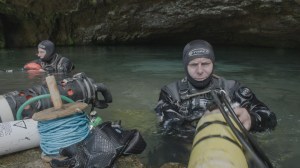
This documentary looks in detail at the story — which held the world’s attention for weeks — of the miraculous rescue and the hundreds of people involved in it. It uses archival TV footage, news animation, and brand new interviews. It also re-enacts many of the crucial scenes — never captured on film for obvious reasons, they were too busy saving lives — using the original divers, and some actors. The film is made by Elizabeth Chai Vasarhelyi and Jimmy Chin, known for their breathtaking docs following mountain climbers — films like Free Solo. The Rescue (which won the People’s Choice award at TIFF this year) is also exciting and gripping, but not as much as the mountain climbing. This is mainly underwater and in near darkness, plus the fact that nearly everyone still remembers the story from just 3 years ago, no spoilers needed. I would have liked to have heard more from the Thai rescuees and a bit less from the British rescuers, but I guess they didn’t want to give interviews. I enjoyed The Rescue, but I wasn’t blown away by it.
Wri/Dir: Hwang Dong-hyuk
It’s present day Korea.
Seong Gi-hun (Lee Jung-jae) is a compulsive gambler who grew up in a working-class neighbourhood. He is constantly compared with his best friend from childhood Cho Sang-woo (Park Hae-soo), who made millions as a top financier, while Gi-hun spiralled deeper and deeper into debt. His wife divorced him and he rarely sees his 10 year old daughter, whose step father is taking her to The States. On top of this his elderly mother is suffering from diabetes. How can he get some cash — quick? At the racetrack, of course, But his winnings are stolen by a stealthy pickpocket (Lee Jung-jae). And that’s when he receives a mysterious card from a strange man. He is invited to play some games to earn a lot of money. He — and 500  others — say yes, and wake up in a strange uniform at an unspecified place. He remembers the games from childhood, like Freeze or Statues where you try to cross the line, but have to freeze when the caller tells you too. The difference is, if you move, you get gunned down by snipers! These games are deadly and there’s no way out. But the winner will get all the cash in a giant glass globe suspended overhead. Who will survive? Who is behind this perverse game? And why are they doing it?
others — say yes, and wake up in a strange uniform at an unspecified place. He remembers the games from childhood, like Freeze or Statues where you try to cross the line, but have to freeze when the caller tells you too. The difference is, if you move, you get gunned down by snipers! These games are deadly and there’s no way out. But the winner will get all the cash in a giant glass globe suspended overhead. Who will survive? Who is behind this perverse game? And why are they doing it?
Squid Game is an engrossing nine-part Netflix dramatic thriller about a group of people down on their luck forced to play a deadly game. Aside from Gihun, his pickpocket is also there — she’s a defector from North Korea; as is his childhood best friend who was caught with his hand in the till. Other characters include an elderly man with cancer, a disbarred doctor, a migrant worker from Pakistan, a petty gangster, and an aging, foul-mouthed sex worker with lots of moxie to spare. And an undercover cop, trying to infiltrate the organization to discover what happened to his missing brother. And they’re supervised by ruthless, nameless and faceless guards dressed in pink hooded jumpsuits. What keeps you watching this bloody and violent drama are the characters — they’re funny, quirky each with their own stories to tell. Squid Game is an incredibly popular series out of Korea, one of Netflix’s top TV shows to date. And I can see why. It seems silly, but it’s a great binge-watch, each chapter ending with enough of a cliff hanger to keep you hooked till the end.
This is a good one.
The Rescue and Lamb open this weekend; check your local listings. Squid Game is now streaming on Netflix.
This is Daniel Garber at the Movies, each Saturday morning, on CIUT 89.5 FM and on my website, culturalmining.com
Daniel Garber talks with Canadaland’s Jesse Brown about The White Saviours
 Hi, this is Daniel Garber at the Movies for culturalmining.com and CIUT 89.5 FM.
Hi, this is Daniel Garber at the Movies for culturalmining.com and CIUT 89.5 FM.
It’s the mid-1990s. A 12-year-old boy in Thornhill, Ontario grabs the headlines for his advocacy of exploited and enslaved kids around the world with the simple words: Free The Children.
Craig Kielberger, along with his brother Mark, started an international charity which grew exponentially. Eventually, as the WE organization, it became one of Canada’s biggest and most famous charities, educating young people in developing countries around the world, as well as forming a wildly popular, self-empowerment youth movement in schools across North America.
But by the summer of 2020, in the midst of the pandemic, it started to collapse. The WE charity’s name became tarnished with accusations of conflict of interest within the government, when they were awarded a $900 million student grant contract. This led to the resignation of Minister of Finance Bill Morneau… and the eventual shutdown of the WE charity in Canada. What happened?
A new six-part investigative documentary called The White Saviours takes a look at the Kielbergers and We Charity, delving into the dark underbelly of this Canadian icon. And what they find isn’t always nice.
The White Saviours is a fascinating and at times shocking examination filled with new interviews with anonymous insiders, along with public recordings of the main players themselves. The White Saviours is now available as a podcast on Canadaland, the platform known for its rabble-rousers, whistleblowers, mudslingers, and all-around shit disturbers. Canadaland was founded by publisher and editor-in-chief Jesse Brown, whom you’ve probably heard on CIUT on Tuesdays from 9-10 am. They produce excellent podcasts like The Commons, The Backbench and the eponymous Canadaland itself.
I spoke to Jesse Brown in Toronto, via ZOOM.
You can listen to The White Saviours here.
Berlin, Los Alamos, London. Films reviewed: Berlin Alexanderplatz, Adventures of a Mathematician, No Time to Die
Hi, this is Daniel Garber at the Movies for culturalmining.com and CIUT 89.5 FM.
This week, I’m looking at three new movies, all from Europe. There’s a Polish mathematician in WWII New Mexico, a refugee turned gangster in present-day Berlin, and a retired secret agent returning to his office in London.
Co-Wri/ Dir: Burhan Qurbani
Francis (Welket Bungué) is a young refugee from Guinea-Bissau who washes ashore on a beach near Berlin (leaving his lover drowned at the bottom of the sea). He’s young, intelligent, strong and ambitious, a handsome man with striking features. He wants to get ahead and live a good life as a good man. Easier said than done. He lives in a temporary housing bloc for refugees and carries no papers. He doesn’t exist in Germany., and is horribly exploited and demeaned at his job. So he leaves honest Labour and is seduced into a life of crime through a twisted friendship with Reinhold (Albrecht Schuch) a psychotic gangster who traffics in women and drugs. Francis — renamed Franz by Reinhold — learns German, and works his way up the ladder under kingpin gangster Pums. But he is betrayed by his so-called friend Reinhold who attempts to kill him. He is nursed  back to help by Mieze (Jella Haase) a beautiful, no-nonsense sex worker, leaving his life of organized crime behind. Eventually they fall in love, and plan to have a family… but can they stay together? Can he resist the allure of treacherous Renihold’s world? And torn apart in two directions — between love and morality on one side and success, wealth and power on the other — which path will he choose?
back to help by Mieze (Jella Haase) a beautiful, no-nonsense sex worker, leaving his life of organized crime behind. Eventually they fall in love, and plan to have a family… but can they stay together? Can he resist the allure of treacherous Renihold’s world? And torn apart in two directions — between love and morality on one side and success, wealth and power on the other — which path will he choose?
Berlin Alexanderplatz is a fantastic contemporary reboot of the classic 1929 German book by Alfred Döblin, sometimes described as one of the first modernist novels. And like any great novel it has a huge cast with tons of side characters and a nicely twisting plot. But also loads of ambiguity — Francis who is persecuted and abused always rises again from the ashes, declaring himself Deutschland – he is Germany. The story is told in five chapters, a cautionary tale narrated by Mieze, even  though she doesn’t appear until halfway through. It’s a long movie — almost three hours — but it holds you captive till the end. It’s amazingly photographed by Yoshi Heimrath with images that will remain long after seeing them.
though she doesn’t appear until halfway through. It’s a long movie — almost three hours — but it holds you captive till the end. It’s amazingly photographed by Yoshi Heimrath with images that will remain long after seeing them.
If you want a taste of contemporary German cinema, you should not miss this one.
Wri/Dir: Thor Klein
It’s the late 1930s in America. Stan Ulam (Philippe Tlokinski) is a mathematician who lives with his younger brother Adam at an ivy league university. Their family is well off, and still living in Lvov Poland, despite the troubling rise of totalitarian regimes all around them. He likes gambling, debating and telling jokes with his best friend, the physicist Johnnie Von Neumann (Fabien Kociecku). It’s all about the odds, Stan says, and house always wins. His life is comfortable but precarious. Then he meets an outspoken young writer named Francoise (Esther Garrel), another refugee from Europe, and sparks fly. But before he has taken their relationship any further, Johnnie invites him to join a highly secretive government enterprise in the rocky plateaus of Los Alamos New Mexico. Siblings are not allowed, just spouses and kids. Giving a tearful goodby to his needy brother, proposed marriage to Francoise, so they could stay together. It’s the Manhattan Project, and he’s there to on a team including Edward Teller (Joel Basman) to build the hydrogen bomb. But shocking news leads to a cerebral swelling treated with a drill into his skull. Will he ever recover?
team including Edward Teller (Joel Basman) to build the hydrogen bomb. But shocking news leads to a cerebral swelling treated with a drill into his skull. Will he ever recover?
Adventures of a Mathematician, based on Ulam’s biography of the same name, is not an action thriller or a passionate romance. It’s a straightforward telling of the highs and lows of a lesser-known genius’s life. He was instrumental in the creation of the hydrogen bomb, something he did not want to make. But he was also responsible for crucial mathematic advances, including his “Monte Carlo Method” (named after the  famed casino) still essential in computer and statistical projects. He also came up with amazing theories of space exploration not yet tested. Though mainly in English, this is a Polish movie, which perhaps explains the odd accents of some of the characters (For example Edward Teller, the Hungarian physicist speaks with a heavy French accent). And story is told at a very slow pace. Still, I found Ulam’s story (someone I’d never heard of before) and the ideas behind his tale, intriguing.
famed casino) still essential in computer and statistical projects. He also came up with amazing theories of space exploration not yet tested. Though mainly in English, this is a Polish movie, which perhaps explains the odd accents of some of the characters (For example Edward Teller, the Hungarian physicist speaks with a heavy French accent). And story is told at a very slow pace. Still, I found Ulam’s story (someone I’d never heard of before) and the ideas behind his tale, intriguing.
Co-Wri/Dir:Cary Joji Fukunaga
His name is Bond…James Bond (Daniel Craig) and he’s retired as a British spy. Now he enjoys sitting around fishing in a lakeside cabin. Five years earlier he said farewell to his one true love, Madeleine Swann (Léa Seydoux), after — he believes — she betrayed him. What he doesn’t know is she’s the daughter of an infamous hitman who once killed a supervillain’s family. But his peace and quiet is interrupted by an urgent call from the CIA. Sceptre, the evil international criminal organization is having a meeting, and if he’s not there, maybe the world will end. Something known as The Heracles Project — the creation of a DNA-linked poison — is in danger of being released. But it’s not as simple as that. It seems both the CIA and MI6 including M (Ralph Fiennes) himself, might be involved in a conspiracy. Should he return to his old job? Who can he trust? And will he  ever see Madeleine again?
ever see Madeleine again?
I’ve been watching James Bond movies since I was a kid, and to tell the truth, they bore me silly with their formulaic storylines, tedious characters and repetitious conventions. So I was very surprised to find how good No Time to Die really is. This is the best 007 I’ve seen in decades. It feels like a real movie, not just a franchise. No spoilers but I can say this one has a black, female 007 (Lashana  Lynch) a Q (Ben Whishaw) coming out as gay (more or less) and a marvelous trio of supervillains, played by Rami Malek, Christoph Waltz, and Dali Benssalah. Also great are the hero (Daniel Craig), and his erstwhile lover, the mysterious Madeleine (Léa Seydoux). It has the usual cars, gadgets, fights, beautiful women and exotic scenery, but it also has characters you actually care about. If you’re willing to go back to a movie theatre, and you want something fun, I think you should see No Time to Die.
Lynch) a Q (Ben Whishaw) coming out as gay (more or less) and a marvelous trio of supervillains, played by Rami Malek, Christoph Waltz, and Dali Benssalah. Also great are the hero (Daniel Craig), and his erstwhile lover, the mysterious Madeleine (Léa Seydoux). It has the usual cars, gadgets, fights, beautiful women and exotic scenery, but it also has characters you actually care about. If you’re willing to go back to a movie theatre, and you want something fun, I think you should see No Time to Die.
Adventures of a Mathematician is available on VOD and digital platforms this weekend, No Time to Die opens in theatres next week — check your local listings. And Berlin Alexanderplatz is playing at the TIFF Bell Lightbox for the Canadian Premier, one screening only, on October 7th, 6.30PM as part of the Goethe Films series History Now: Past as Prologue.
This is Daniel Garber at the Movies, each Saturday morning, on CIUT 89.5 FM and on my website, culturalmining.com
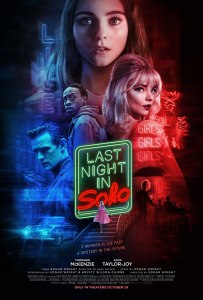




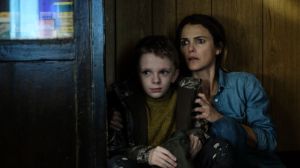
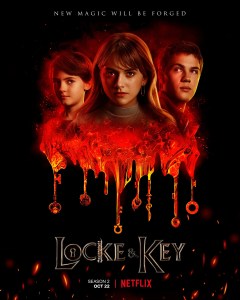
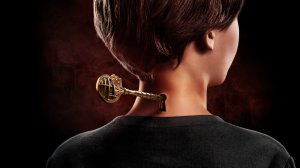

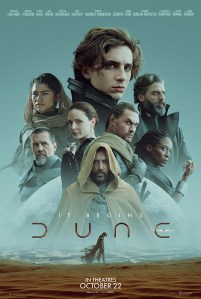


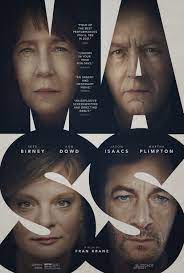
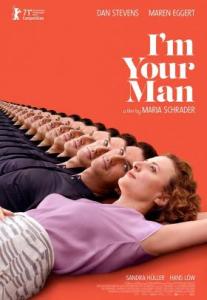


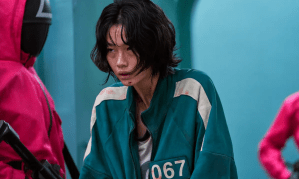



leave a comment